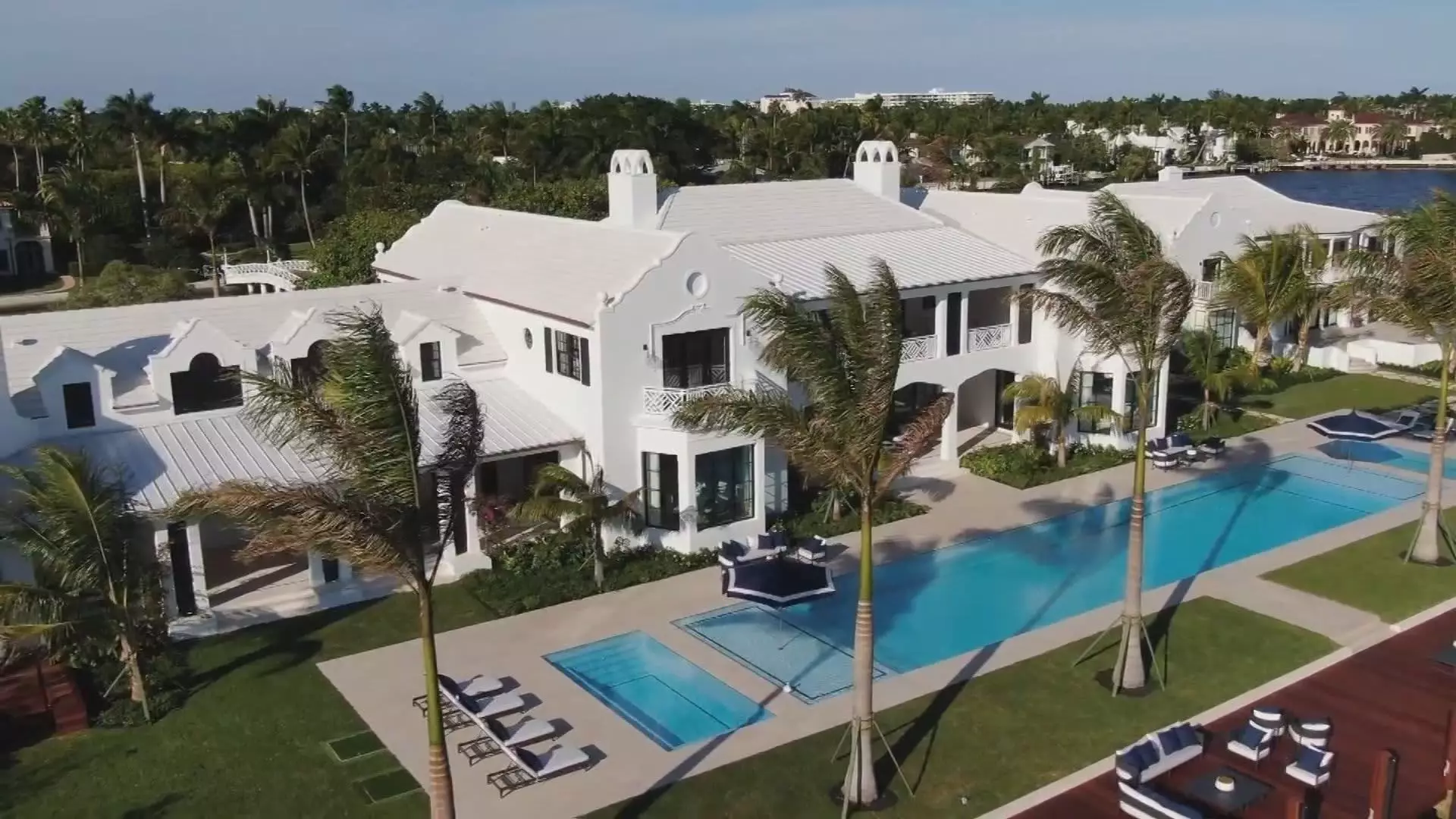In an era marked by economic uncertainty and fluctuating global real estate trends, the ultra-luxury housing market in the United States demonstrates remarkable resilience. Recent data sheds light on the robust demand for high-end properties, particularly in glamorous locales such as New York, Miami, and Palm Beach, Florida. Recent findings released by real estate consultancy Knight Frank reveal a noteworthy spike in sales of homes priced at $10 million and above. In stark contrast, while many luxury markets around the world experienced downturns, these cities exhibit a burgeoning appetite among affluent buyers seeking exclusive trophy properties.
An Upward Trajectory in U.S. Sales
Specifically, sales figures tell an impressive story: Palm Beach witnessed a staggering 44% increase in transactions of homes valued at $10 million or more in the second quarter. Miami followed suit with a 27% rise, and New York City reestablished its dominance with a 16% uptick in ultra-luxury home sales. New York recorded 72 sales of homes in this high-price bracket, its most substantial quarterly sales total in two years. This sustained interest indicates a strong preference for ultra-luxury real estate in these metropolitan areas, likely driven by the increasing wealth among the ultra-rich and their desire to park their investments in prime locations.
The Competition Among Elite Markets
Comparatively, when looking at national sales data, Los Angeles faced challenges, recording a 29% decline in high-end property sales. A significant factor in this downturn can be attributed to the introduction of a new tax policy—namely, the 5.5% “mansion tax” imposed on homes sold for over $10 million. This policy appears to have spurred some potential buyers to reassess their investment strategies, impacting the overall volume of ultra-luxury sales in the area.
Despite fluctuating trends, some extraordinary transactions underscore the ongoing desirability of ultra-luxury homes. Notably, Palm Beach made headlines with a remarkable $150 million sale of its only private island. Additionally, a historic 3.2-acre estate in the same region fetched an impressive $148 million, while a Manhattan penthouse sold for $135 million shortly thereafter. These transactions not only exemplify buyers’ willingness to invest substantial sums but also highlight the allure of unique and rare properties, emphasizing the concept that in the world of ultra-wealthy buyers, exclusivity often drives demand.
While the American ultra-luxury market thrives, global trends tell a more complicated story. Knight Frank’s assessment reveals that internationally, sales of homes over $10 million have dipped by 4%, totaling $8.5 billion across 11 prominent luxury markets. However, Dubai continues to set the benchmark for elite real estate, with 85 transactions in the second quarter, showcasing a sharp increase from previous years. The city has become a beacon for ultra-wealthy individuals seeking tax-friendly environments, drawing affluent buyers from various regions, including Russia and Europe.
Conversely, London has not been as fortunate, witnessing a staggering 47% drop in high-end sales. This decline raises concerns about the economic climate and potential new tax burdens impacting the UK’s affluent class, prompting many to reconsider their investment strategies in the prestigious real estate market.
Looking forward, there are signs that falling interest rates may alleviate some pressure in the luxury market. A growing number of high-net-worth individuals are likely to understand the advantages of investing in real estate amid accessible financing conditions. Analysts predict a potential uptick in transaction volumes as buyers reassess the value of ultra-luxury homes amid changing economic conditions.
As markets evolve, it is evident that the appetite for ultra-luxury properties will persist, particularly among those seeking to make a statement and invest in significant assets. The combination of wealth creation and strategic investment in coveted locations will likely continue to shape the ultra-luxury real estate landscape for years to come, even as challenges manifest in certain regions. In this dynamic sphere, the future remains bright for both buyers and sellers navigating the ever-changing tides of the high-end property market.

